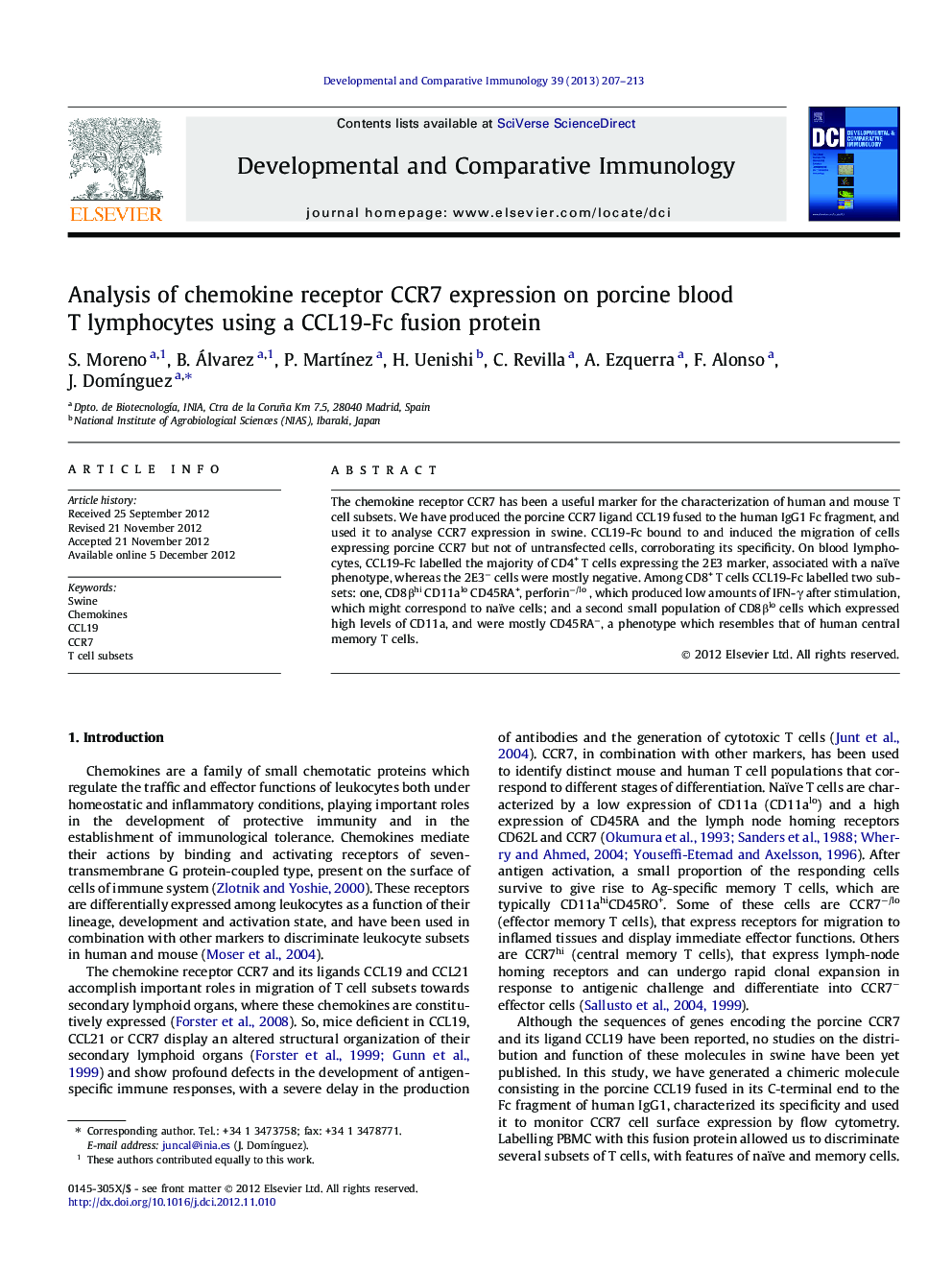| Article ID | Journal | Published Year | Pages | File Type |
|---|---|---|---|---|
| 2429333 | Developmental & Comparative Immunology | 2013 | 7 Pages |
The chemokine receptor CCR7 has been a useful marker for the characterization of human and mouse T cell subsets. We have produced the porcine CCR7 ligand CCL19 fused to the human IgG1 Fc fragment, and used it to analyse CCR7 expression in swine. CCL19-Fc bound to and induced the migration of cells expressing porcine CCR7 but not of untransfected cells, corroborating its specificity. On blood lymphocytes, CCL19-Fc labelled the majority of CD4+ T cells expressing the 2E3 marker, associated with a naïve phenotype, whereas the 2E3− cells were mostly negative. Among CD8+ T cells CCL19-Fc labelled two subsets: one, CD8βhi CD11alo CD45RA+, perforin−/lo , which produced low amounts of IFN-γ after stimulation, which might correspond to naïve cells; and a second small population of CD8βlo cells which expressed high levels of CD11a, and were mostly CD45RA−, a phenotype which resembles that of human central memory T cells.
► Generation of cell lines expressing porcine CCR7 and CCL19. ► Use of CCL19-Fc fusion protein to analyze CCR7 expression in swine. ► CCR7 expression discriminates T cell subsets with naïve and memory features in swine.
